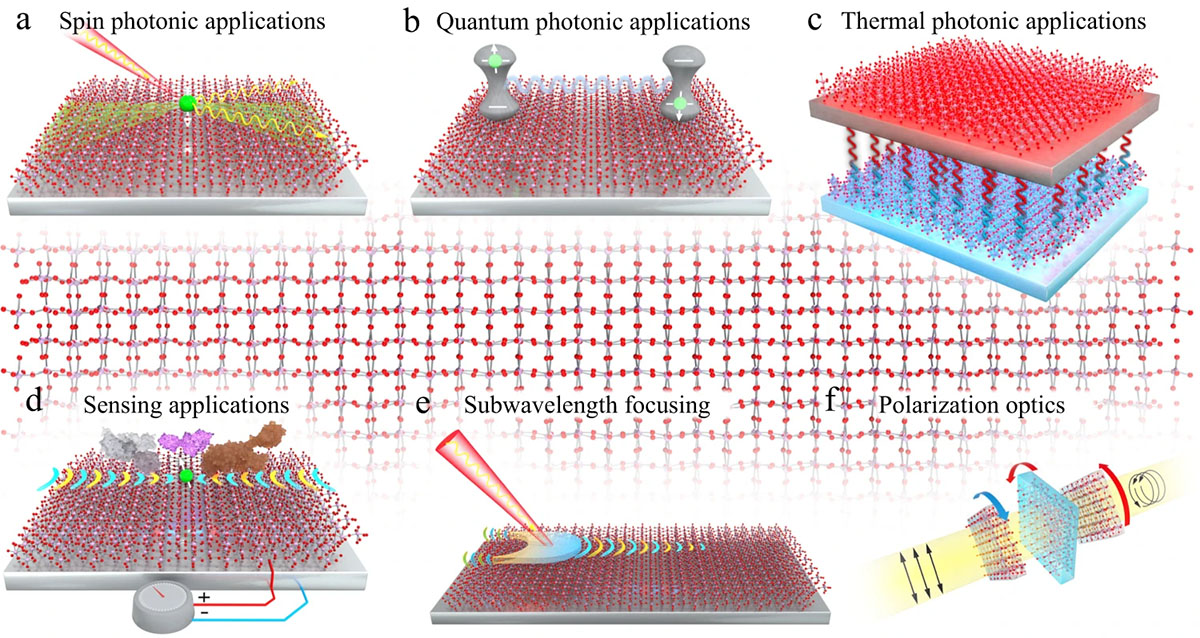| Aug 26, 2024 |
Manipulation of nanolight provides new insight for quantum computing and thermal management
(Nanowerk News) A recent study led by University of Minnesota Twin Cities researchers provides fundamental insight into how light, electrons, and crystal vibrations interact in materials. The research has implications for developing on-chip architectures for quantum information processing, significantly reducing fabrication constraints, and thermal management.
|
|
The field of research studying what are called “planar hyperbolic polaritons” is new, dating back only a few years. The research paper, published in Nature Communications ("Planar hyperbolic polaritons in 2D van der Waals materials"), provides an overview of the field's current state, explores potential avenues for further exploration, and highlights future opportunities.
|
 |
| a Spin-momentum locking of evanescent electromagnetic waves in 2D hyperbolic materials. b Interaction of two quantum emitters via super-Coulombic dipole–dipole interactions within the 2D planar hyperbolic medium. c Near-field radiative heat transfer between a pair of hyperbolic sheets. d Biosensing with tunable, plasmonic vdW materials. e Infrared near-field optical nanoimaging of α-MoO3 using a plasmonic antenna. f Manipulation of light polarization states using twisted stacks of anisotropic vdW materials. (Image: Reproduced from DOI:10.1038/s41467-023-43992-8, CC BY) (click on image to enlarge)
|
|
Polaritons refer to a hybrid particle that is created from the interaction between light (photons) and matter (excitons, phonons, plasmons). Hyperbolic refers to the specific dispersion that describes how the polariton wavelength changes with the incident frequency (energy) within such materials, which can allow for the manipulation of light in specific directions. In combining both of these factors, researchers are looking at how to manipulate light in a well-defined direction.
|
|
A light bulb can be used as a simple example of this theory. When you turn a switch on, the light from the bulb emits a broad range of wavelengths that disperse in all directions, because space has the same property in all directions. But there are certain materials that can manipulate light in a 2D space, where in this example, the light bulb would shine like a laser along a well-defined direction once you turn on the switch.
|
|
“By manipulating the properties of hyperbolic polaritons, we can look to unlock new applications and advancements in various industries, such as polariton qubits (basic units of quantum information) for a compact quantum computer,” said Tony Low, the senior author of the study and the Paul Palmberg Professor in the Department of Electrical and Computer Engineering at the University of Minnesota.
|
|
“Other potential applications of this research could be improving thermal management in specific devices, like a transistor,” said Joshua Caldwell, a senior author of the study and professor at Vanderbilt University.
|
|
The research team offered insights into the physical phenomena, including techniques to manipulate the hyperbolic polaritons.
|

